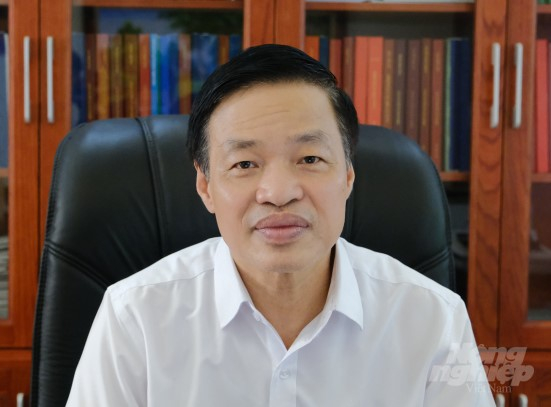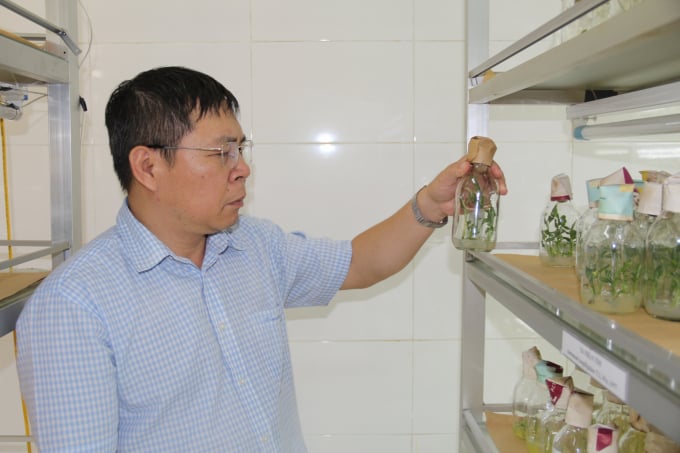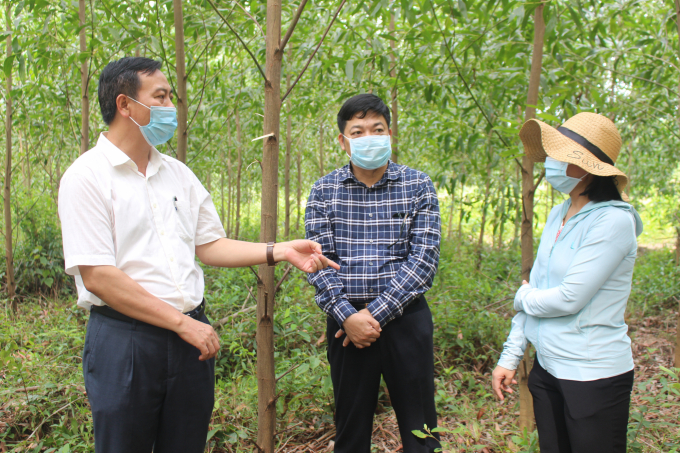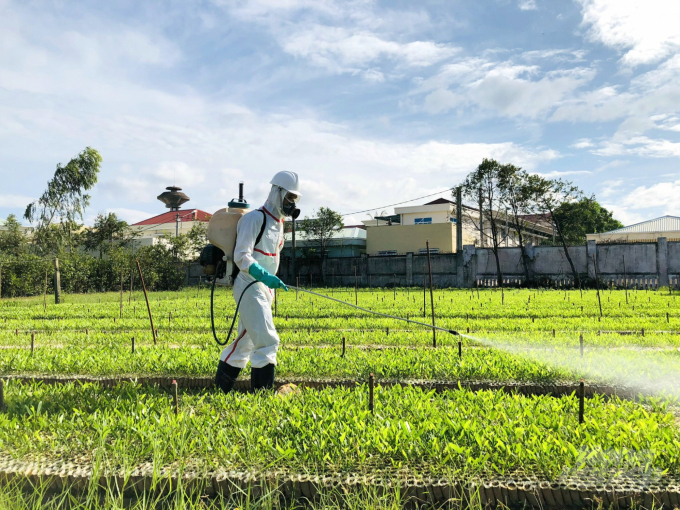November 28, 2025 | 01:23 GMT +7
November 28, 2025 | 01:23 GMT +7
Hotline: 0913.378.918
November 28, 2025 | 01:23 GMT +7
Hotline: 0913.378.918

Prof. Dr. Vo Dai Hai, Director of Vietnam Academy of Forestry Science. Photo: Ba Thang.
Although in recent years, scientific and technological research in forestry has earned many very important achievements, contributing to the growth and sustainable development of the industry. However, there are still difficulties and challenges that need to be attentively addressed by the Government and state management agencies, specifically as follows:
1. Regular tasks by function according to Joint Circular No. 121/2014/TTLT-BTC-BKHCN dated August 25th, 2014 of the Ministry of Finance and the Ministry of Science and Technology and Circular 90/2017/TT-BTC dated August 30th, 2017 of the Ministry of Finance. (hereinafter referred to as Circular 121 and Circular 90 for short).
The introduction of these Circulars is a major change in order to gradually bring public scientific and technological organizations into an autonomous and self-responsible mechanism. After nearly 7 years of implementation (from 2015 to present), these regular tasks by function are only suitable for management functions, completely inconsistent with science and technology organizations’ current scientific research practices.
In basic terms, the Circulars stipulate the content of cost estimates and expenditures, which are quite adequate such as salary and allowances; wages for the performance of labor contracts; contributions to social insurance, health insurance, unemployment insurance; expenditures according to economic and technical norms (expenses for purchasing raw materials, materials, energy; payment for public services; expenses for office supplies; expenses for information and communication; expenses for professional conferences and seminars; travel expenses; expenses for renting equipment to perform tasks; expenses for repairing, preserving and maintaining equipment for professional work...).
Yet in regard to the current reality in the MARD’s science and technology organizations, the allowance of the regular tasks by function granted by the Ministry is only enough to pay for 9 - 10 months' salary of scientific staff (In the past 3 years, the Ministry has cut 10% of this funding source). As a result, there is no more funding to spend on research contents that were stipulated in the Circulars.

In fact, due to insufficient funding, a lot of research tasks can only be studied in theory. Photo: LB.
For forestry research with its own characteristics, it is essential to travel far, buy seedlings, materials, fertilizers, hire workers, etc., resulting in insufficient funding, so most of these tasks can only be studied in theory, unable to perform field research tasks, especially key tasks.
Estimation construction, plan approval, report writing, acceptance test at all levels... also take a lot of time and effort while the quality amounts to nothing.
Also, under this new mechanism, public scientific and technological organizations will not have regular funding sources for their general management activities such as petrol, oil, electricity, water, travel expenses, etc., making it very difficult for units.
Therefore, it is recommended to change or cancel these circulars.
2. The remuneration regime for scientists is still poor, reflected in low and inadequate salaries (according to the mentioned Circular 121, Circular 90). The tasks of science and technology are in small amount, leading scientists to find more work by themselves to make up for the lack of salary.
Many qualified scientific staffs that are well-trained in the country and abroad have applied for a job transfer, leading to the "brain drain" phenomenon despite the fact that units have also tried to develop regulations to retain scientific staff, they were unable to succeed.

According to Prof. Dr. Vo Dai Hai, although the units have also tried to develop regulations to retain scientific staff, they were unable to succeed. Photo: MP.
3. Decree No. 54/2016/ND-CP dated June 14th, 2016 of the Government regulating the autonomy mechanism of public scientific and technological organizations stipulates 3 important autonomy: Finance, apparatus organization and personnel, assets.
However, in reality, at present, they are all entangled by the environment, management mechanism and bound by many policies, so the units are almost unable to be autonomous. It is recommended that the State continue to remove obstacles regarding the mechanism.
4. Research equipment in the forestry sector is quite outdated. Although the MARD in recent years has tried to invest, due to limited funding, they could only purchase meager equipment at low prices.
Modern, high-tech equipment with a price of over VND 2 billion/equipment such as gene sequencing machine, near-infrared spectrum analyzer, 3D scanner, gas chromatograph machine, thermal modification system... is not yet available. This shows that there is still a long way to go to 4.0 technology, digital technology in forestry science and technology.
5. Public-private cooperation, linking with businesses in research is the right policy and direction. However, due to the distinct features of long-term forest trees taking a long time for product harvesting and many risk impacts, there are almost no enterprises and private businesses investing in the field of forestry at present.
Most enterprises only participate in post-research stages such as application and transfer of research results into production. Considering this reality, it is necessary for the State to have policies to create motivation so that enterprises participate more in forestry research.

Forest trees are long-term, taking a long time to harvest, full of risks, so there are almost no enterprises and private businesses investing in research. Photo: TD.
6. The investment capital sources for science and technology need to be large enough, there is a need for in-depth research programs in the forestry field to fully and completely solve the practical problems of production. More attention should be paid to basic and fundamental research. Proposals to the Government are essential to include wood and wooden products in the list of national products to maintain investment in research and development.
7. Land fund for forestry science and technology research is required to be large enough in order to maintain the research site for a long time. However, in reality, this land fund has not yet met t requirements of the scientific and technological research work, while many localities have conducted land acquisition to serve economic development goals.
The Government should be requested to create conditions for science and technology organizations to have more land funds for research and not recover land or compensate for the land of another location if it has been recovered.
8. The longest time to perform forestry science and technology tasks is currently 5 years. With this amount of time, when the tasks are over, the plants in new experiments will be about 2.5 - 4 years old, while the business cycle of native tree species is at least 15-20 years.
This fact shows that forestry science and technology tasks require a more specific approach and mechanism, with a longer research time for them to be effective. It should be proposed that the Government extends the implementation time of forestry science and technology tasks to a maximum of 8-10 years.

Prof. Dr. Vo Dai Hai thinks that it is necessary to extend the implementation time of forestry science and technology tasks to a maximum of 8-10 years. Photo: HA.
9. The payment procedures are still complicated and time-consuming, so it is necessary to aim to build a compact contracting mechanism down to the final product.
10. Asset handling as a result of science and technology tasks: Implementation of Decree 70/2018/ND-CP dated May 15th, 2018 shows that there are still some unclear regulations on the asset being experimental forests formed through the execution of science and technology tasks.
In fact, at the end of the topic, will a new forest tree about 2.5 - 3.5 years old be considered a fixed asset? Specific instructions are needed: When assigning this "asset" to the organization in charge of the task, how to determine its value?
How to carry out the annual application and commercialization of this particular “asset”? Many science and technology organizations have had to spend their own funds to protect, nurture and take care of forests for many years after the project ended, so how should profits be distributed when the products are harvested?

(VAN) After the institutional merger, Da Nang possesses significant forest-carbon reserves and is proactively engaging in the carbon market, creating a new revenue stream.

(VAN) An Giang strengthens communication against IUU fishing, increases inspections and sanctions, and is determined to remove the EC’s “yellow card” while developing a sustainable fisheries sector.

(VAN) As green transition becomes a global trajectory, Viet Nam’s biggest challenge is not only technology and models, but how to ensure that capital flows reach the right beneficiaries.

(VAN) The Ministry of Agriculture and Environment must spearhead the construction of green governance, spanning decision-making processes and investment standards to policy evaluation mechanisms.

(VAN) The Agriculture and Environment sector of Khanh Hoa has achieved numerous milestones over the past 80 years, contributing significantly to the goal of establishing the province as a centrally governed city by 2030.

(VAN) Viet Nam is entering the pivotal period of 2025-2030, moving toward the formulation of the Remote Sensing Law, which will establish a legal foundation for the development of national digital data.

(VAN) The agricultural sector is finalizing the strategic framework for emission reduction, setting the goal of sharply cutting methane and 403.7 million tons of CO2 equivalent and moving toward Net Zero by 2050.